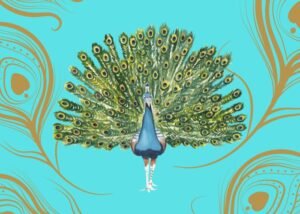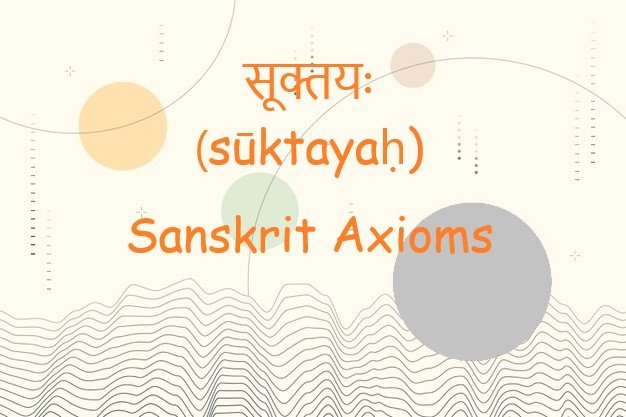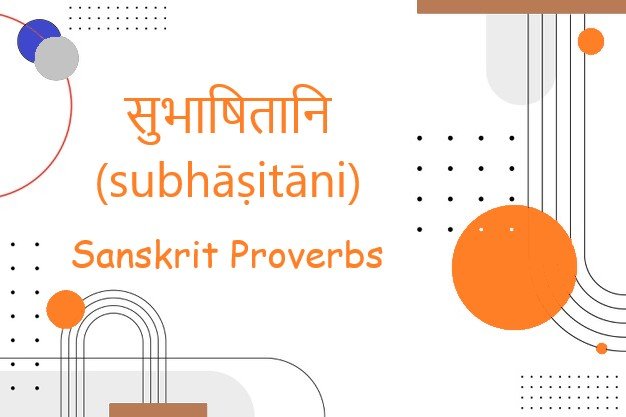Essay On Peacock in Sanskrit
This post is an essay on Peacock in Sanskrit.
मोर पर संस्कृत में निबंध।
मयूरः इति विषये संस्कृतभाषायां निबन्धः।
Translation is given in Hindi and English for better understanding.
This short can be referenced by school students and interested Sanskrit learners.

Table of Contents
Video of Essay on Peacock in Sanskrit
मयूरः इति विषये संस्कृतभाषायां निबन्धः।
मयूरः भारतदेशस्य राष्ट्रीयः खगः अस्ति।
सः विहगानां राजा अस्ति।
सः एकः सुन्दरः खगः अस्ति।
मयूरः वने वसति।
मयूरस्य कण्ठः नीलः अस्ति।
तस्य मस्तके रम्या शिखा भवति।
कलापः तस्य वैशिष्ट्यम्।
मयूरः कृष्णमेघदर्शनेन तुष्यति।
वर्षाकाले मयूरः नृत्यति।
मयूरः विद्यादेव्याः शारदायाः वाहनम्।
mayūraḥ iti viṣaye saṃskṛtabhāṣāyāṃ nibandhaḥ।
mayūraḥ bhāratadeśasya rāṣṭrīyaḥ khagaḥ asti।
saḥ vihagānāṃ rājā asti।
saḥ ekaḥ sundaraḥ khagaḥ asti।
mayūraḥ vane vasati।
mayūrasya kaṇṭhaḥ nīlaḥ asti।
tasya mastake ramyā śikhā bhavati।
kalāpaḥ tasya vaiśiṣṭyam।
mayūraḥ kṛṣṇameghadarśanena tuṣyati।
varṣākāle mayūraḥ nṛtyati।
mayūraḥ vidyādevyāḥ śāradāyāḥ vāhanam।
Essay On Peacock
The peacock is the national bird of India.
It is the King of birds.
It is a very beautiful bird.
The peacock lives in forests.
The peacock’s neck is blue.
It has a pretty crest on its head.
Its tail feathers are its speciality.
It becomes happy after seeing black clouds.
The peacock dances beautifully when it rains.
The peacock is Goddess Saraswati’s vehicle.
मोर पर निबंध
मोर भारत का राष्ट्रीय पक्षी है।
वह पक्षियों का राजा है।
वह एक सुंदर पक्षी है।
मोर जंगलों में रहता है।
मोर का कंठ नीला होता है।
उसके सिर पर सुंदर शिखा होती है।
मोरपंख इसकी विशेषता हैं।
मोर काले बादलों को देखकर खुश हो जाता है।
बारिश होने पर मोर नाचता है।
मोर सरस्वती देवी का वाहन है।

Savitribai Phule
Sanskrit Essay on Savitribai Phule, with translation …
Internet
Essay on Internet in Sanskrit, English, and …
Importance of Machines
Essay on Importance of Machines in Sanskrit, …
Importance of Art
Essay on Importance of Art in Sanskrit, …
Republic Day of India
Essay on Republic Day of India in …
Examination
Essay on Examination in Sanskrit, English, and …
Pandita Ramabai
Essay On Pandita Ramabai in Sanskrit, English, …
Cricket
Essay on Cricket in Sanskrit, English, and …
Teachers Day
Essay On Teachers Day in Sanskrit, English, …
Navaratri
Essay On Navaratri in Sanskrit, English, and …
The Experience of Covid
Essay on The Experience of Covid in …
Essay on Ganeshotsav
Essay on Ganeshotsav in Sanskrit, English, and …
My Family
Essay on My Family in Sanskrit, English, …
Importance of Indian Festivals
Essay on Importance of Indian Festivals in …
Importance of Discipline
Essay on Importance of Discipline in Sanskrit, …
Importance of Sports
Essay on Importance of Sports in Sanskrit, …
Television
Essay on Television in Sanskrit, English, and …
Nutritious Diet
Essay on Importance of Nutritious Diet in …
Crow
Essay on Crow in Sanskrit, English, and …
Computer
Essay on Computer in Sanskrit, English, and …
Books My Friend
Essay on Books My Friend in Sanskrit, …
Mahatma Gandhi
Essay on Mahatma Gandhi in Sanskrit, English, …
Lokmanya Tilak
Essay on Lokmanya Tilak in Sanskrit, English, …
Deer
Essay on Deer in Sanskrit, English, and …
Himalayas
Essay on the Himalayas in Sanskrit, English, …
Eagle
Essay on Eagle in Sanskrit, English, and …
Snake
Essay on Snake in Sanskrit, English, and …
Dog
Essay on My Favourite Animal - Dog …
Importance of Knowledge
Essay on Importance of Knowledge in Sanskrit, …
Makar Sankranti
Essay on Makar Sankranti in Sanskrit with …
Cuckoo
Essay on Cuckoo in Sanskrit, English, and …
Swan
Essay on Swan in Sanskrit, English, and …
Indian National Flag
Essay on the Indian National Flag in …
Importance of Cleanliness
Essay on Importance of Cleanliness in Sanskrit, …
Importance of Exercise
Essay on Importance of Exercise in Sanskrit, …
Christmas
Essay on Christmas in Sanskrit with translation …
Parrot
Essay on Parrot in Sanskrit, English, and …
Importance of Water
Essay on Importance of Water in Sanskrit, …
Shiva
Essay on Bhagavan Shiva in Sanskrit, English, …
Summer Season
Essay on Summer Season in Sanskrit, English, …
Rainy Season
Essay on Rainy Season in Sanskrit, English, …
My Home
Essay on My Home in Sanskrit, English, …
Dussehra
Essay on Dussehra in Sanskrit, English, and …
River
Essay on River in Sanskrit, English, and …
My favourite Teacher
Essay on My Teacher in Sanskrit, English, …
Farmer
Essay on Farmer in Sanskrit, English, and …
My Village
Essay on My Village in Sanskrit with …
Horse
Essay on Horse in Sanskrit with transliteration, …
Indian Independence Day
Sanskrit Essay on Indian Independence Day with …
Raksha Bandhan
Essay on Raksha Bandhan in Sanskrit with …
International Yoga Day
Essay on International Yoga Day in Sanskrit …
World Environment Day
Essay on World Environment Day in Sanskrit …
River Ganga
Essay on River Ganga in Sanskrit with …
Shri Rama
Essay on Shri Rama in Sanskrit with …
Moon
Essay on Moon in Sanskrit with transliteration, …
Library
Essay on Library in Sanskrit with transliteration, …
Abdul Kalam
Essay on Dr. A P J Abdul …
Goddess Saraswati
Essay on Goddess Saraswati in Sanskrit, English, …
Lion
Essay on Lion in Sanskrit, English, and …
Diwali
Essay on Diwali in Sanskrit, English, and …
Sun
Essay on Sun in Sanskrit, English, and …
Sanskrit Language
Essay on the Sanskrit language in Sanskrit, …
Cow
Essay on Cow in Sanskrit with translation …
Beach
Essay on Beach in Sanskrit with translation …
Festival of Holi
Essay on Festival of Holi in Sanskrit, …
Shri Krishna
Essay on Shri Krishna in Sanskrit, English, …
My Country
Essay on my country in Sanskrit, English, …
Mango Tree
Essay on Mango Tree in Sanskrit, English, …
Peacock
Essay on Peacock in Sanskrit, English, and …
Elephant
Essay on Elephant in Sanskrit, English, and …
My Friend
Essay on My Friend in Sanskrit, English, …
Shri Ganesha
Essay on Shri Ganesha in Sanskrit, English, …
Savitribai Phule
Internet
Importance of Machines
Importance of Art
Republic Day of India
Examination
Pandita Ramabai
Cricket
Teachers Day
Navaratri
The Experience of Covid
Essay on Ganeshotsav
My Family
Importance of Indian Festivals
Importance of Discipline
Importance of Sports
Television
Nutritious Diet
Crow
Computer
Books My Friend
Mahatma Gandhi
Lokmanya Tilak
Deer
Himalayas
Eagle
Snake
Dog
Importance of Knowledge
Makar Sankranti
Cuckoo
Swan
Indian National Flag
Importance of Cleanliness
Importance of Exercise
Christmas
Parrot
Importance of Water
Shiva
Summer Season
Rainy Season
My Home
Dussehra
River
My favourite Teacher
Farmer
My Village
Horse
Indian Independence Day
Raksha Bandhan
International Yoga Day
World Environment Day
River Ganga
Shri Rama
Moon
Library
Abdul Kalam
Goddess Saraswati
Lion
Diwali
Sun
Sanskrit Language
Cow
Beach
Festival of Holi
Shri Krishna
My Country
Mango Tree
Peacock
Elephant
My Friend
Shri Ganesha
Other Interesting Sections

Axioms
Learn about Sanskrit Axioms which is a statement or proposition which is regarded as being established, accepted, or self-evidently true.

Proverbs
Learn about Sanskrit Proverbs which are a short, well-known saying, stating a general truth or piece of advice.

Shlokas
Learn about Shloka or shlokas in Sanskrit which consists of four padas of 8 syllables each, or of two half-verses of 16 syllables each.